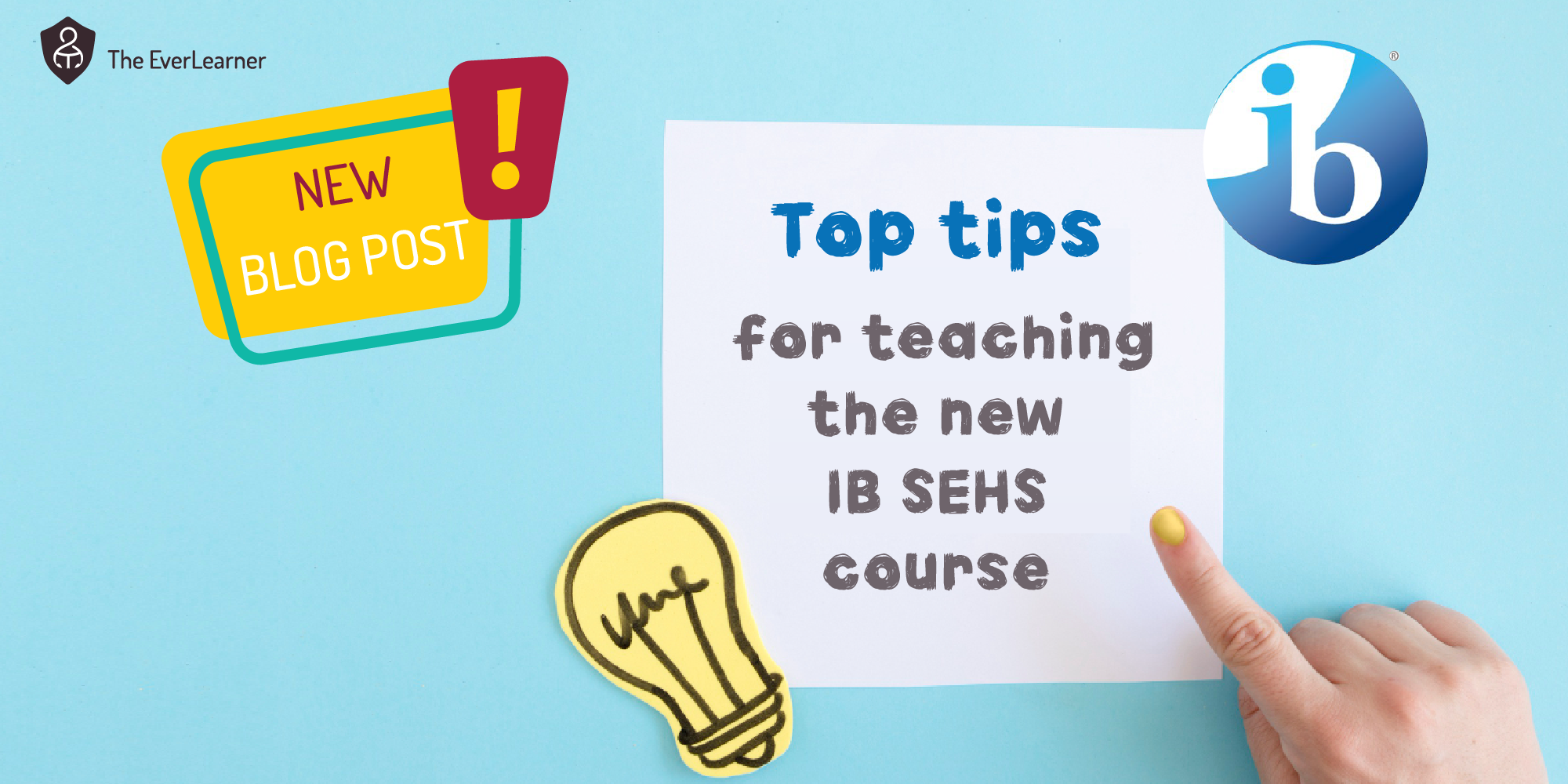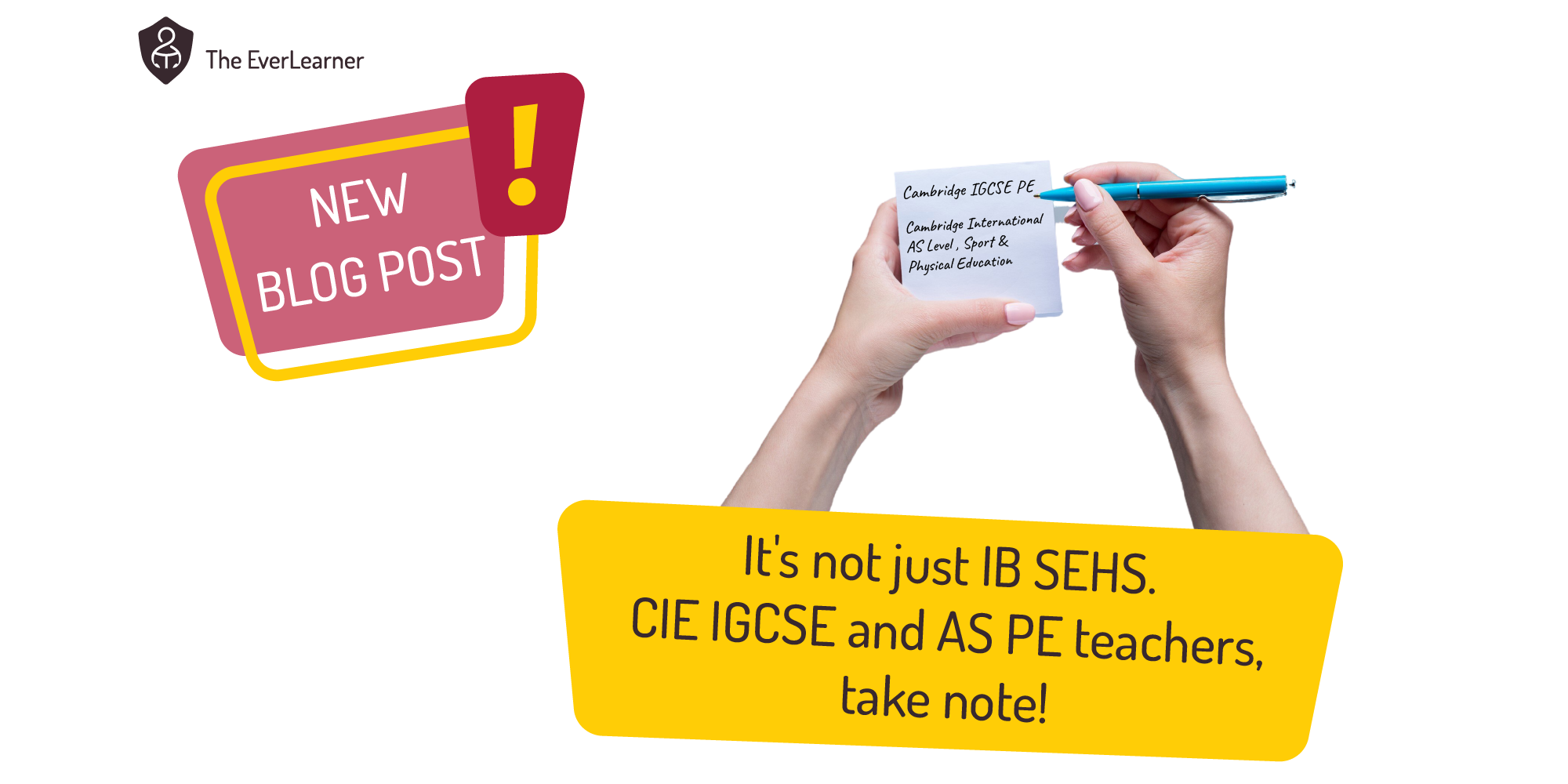How to best support your IBDP SEHS students before they begin the course
Over the past year, I have been lucky enough to meet and have online conversations with loads of teachers just starting out teaching the new IBDP SEHS course. One thing everyone mentions is the amount of theoretical content the students need to learn and that teachers need to teach in the two years, and the jump that students are expected to make from MYP/KS4 to the new IBDP course.
Putting it out there, I think that the new IB SEHS course is absolutely fantastic. It is rigorous in its content expectations and covers elements of science that are so important in sport and exercise but have not been included in other courses. The teaching of the menstrual cycle and its effect on training and performance is a great addition! I also absolutely love the interweaving and connections between all the sciences and the complete application of the knowledge to sport, exercise and health. It is, by far, becoming one of my favourite courses to lead and prepare resources and content for.
But there is no denying that this course is tough. It is tough for teachers, let alone for students. After talking to so many IB teachers over the past year, especially those in IB schools that teach the MYP before the diploma (but also lots of you teaching the Cambridge IGCSE), it has been apparent that, due to the amount of content to learn, some areas cannot be taught in as much depth as it would be ideal, especially when we consider that many students come into the course with little or no past sport science knowledge.
We’re really keen to help students and teachers make the IB SEHS course as well-supported and easy to master as possible, yet still retain its challenge. This is why we have created a pre-IB course to help build the fundamentals in preparation for the full IBDP.

We believe we have created a course which introduces students to the key concepts of sports, exercise and health science in a way that can be delivered in the final years of study as part of the MYP PHE programme, or as a summer preparation course for students (more about that later).
The pre-IB course matches the IB SEHS course in structure, presenting the three key themes of exercise physiology, biomechanics and sport psychology. It introduces concepts present in the IBDP SEHS specification that we feel are appropriate but, most importantly, can be taught through practical PE and sport lessons to strengthen understanding and application of knowledge. We’ve chosen elements which we feel can stimulate inquiring minds and help students to explore how their bodies work, as well as reflecting on the best ways to get their bodies to perform at their peak. 

Breaking it down further, we have created 27 lessons, each of which has the following:
A video tutorial: (See: How to set a watch lesson assignment)
Short videos averaging seven minutes in length. Alongside each video tutorial, students can make notes to help embed that information and support their practice quizzing.
Practice quizzing: (See: More about practice mode)
I always encourage teachers to set this in addition to the video tutorials. I want my students to be immediately spending approximately 10 minutes practising what they have learned in the video tutorial. AND if they have made excellent notes during the video, these notes will appear in the quiz to help them out.

Test quizzing: (See: More about test mode)
The next step is testing. These are high-stakes, retrieval questions that are fantastic at assessing how much students have understood. I always recommend students to give these a go in a structured assignment, so that both student and teacher can keep track of progress in the dashboard (see here for more about using the dashboard). In these tests, students cannot access their online notes and there is an addition of a countdown timer, which adds pressure to their recall, just like in the exam.

A few things to note about testing - if students are struggling to answer the questions, either because of the time limit or because they don’t know the answers, I always send them back to the video tutorials and practice quizzing first. If a student has access arrangements and they are entitled to extra time in their exams, then you can automatically add this on through the student’s profile with one click of a button (see here for information on how to to do this).

Checkpoint quizzing: (See: What is checkpoint mode)
Equivalent to an end-of-unit test, these are great at testing students’ knowledge over a range of similar lessons. Students can re-take them as many times as they like, and the questions will be different (although covering the same subject knowledge), so they truly assess mastery of the content rather than just memorisation of a set of questions, or even copying off of their best friend (not that your students would do that!).

With all this in mind, I think there are two key ways (there may well be more) in which this course can be used for pre-IB students:
| Option 1 - Alongside MYP lessons | Option 2 - Holiday preparation course |
|
Used within lessons as starters, plenaries or quizzing, as well as homework tasks. The content will be learned alongside practical PE and sport and will supplement the knowledge being taught. For example, let’s take a basketball lesson. Students are learning about half and full court presses but are also being taught about the short-term effects of exercise. This might be introduced as a homework video set before the lesson for all the students in the class.
It only takes a minute to do this. Each student is tracked, so you, as the teacher, know exactly how much of the video each student has watched. After the lesson, where you have taught both full and half-court press as well as teaching them the experiences of the short-term effects of exercise, you might set a quick 10- or 20-question quiz to assess their understanding, feeding into the assessment of criterion A.
|
For this option, I see it much more as developing students’ knowledge and understanding through their own independent study and preparation. Thinking that the summer holidays are roughly eight weeks, students can be set a six-week course (it only seems fair to give them a couple of weeks off).

|
To find out more about assignments, check out James's blog: "My five favourite PE assignment structures on TheEverLearner.com".
We feel this course fits snugly in with the MYP PHE rubric of ‘Criterion A: Knowledge and Understanding’ and could definitely be used to gather evidence of achievement. Additionally, depending on how your school delivers ‘Criterion B: Planning for performance’, our Training lessons would be perfect to support the teaching of this and lead beautifully into a greater depth of understanding on fitness training programmes as well as laboratory investigations.

Great news! If you are already a customer, this Pre-IBDP SEHS course is already included in your current subscription: you just need to add it to your group(s). This article here explains how to create a group and add courses to it - simply follow these steps to add the pre-IB course 😊:
👩🎓 Creating groups"
However, if you do not currently have a subscription, fear not! We can let you have a 28-day free trial where you can try out this course, as well as the IBDP SEHS or any other course you would like. 
So, readers, there you have it... A new opportunity for your students and you too! We're so proud of this course, and we really believe it can be of great benefit to you and your students. If you have any questions or suggestions, please do reach out. Have a lovely day.
Hannah
%20Text%20(Violet).png)





